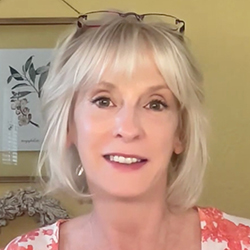Mindful And Paced Breathing

Pay attention to your breathing, slow your thoughts down and become aware of the life force rushing down your throat. The very first action we take as a new born, is to take a deep breath to fuel our journey, and the very last thing we do as a being, is to expel the last gasp of air. Mostly, we hardly ever think about those two actions, breathing in life and expelling the used energy.
If, as taught in many therapies like meditation and yoga, we focus on the pacing and timing, mindful breathing can profoundly impact our mind and bodies.
A recent study in the Journal of Neurophysiology found that brain regions used for emotion, attention and body awareness, activated when attention was paid to breathing patterns and pace.
Pacing breathing involves inhaling and exhaling to a set rhythm, you inhale for 4 counts, exhale for 6, and repeat etc. Previous research showed that paced breathing exercises can both focus attention and regulate the nervous system.
The study found that paced breathing uses neural networks beyond the brain stem that are tied to emotion, attention, and body awareness. By tapping into these networks using the breath, we can use it as a powerful tool for regulating our responses to stress.
The researchers at the Feinstein Institute for Medical Research looked at how the brain responded to different breathing exercises. They used adults already undergoing EEG monitoring for epilepsy. These adults were asked to take part in breathing exercises while their brains were being monitored.
First, the participants rested with their eyes open for about eight minutes while breathing normally, then sped up their breath, to a rapid rate, for just over two minutes, while breathing through the nose, then slowed back down to regular breathing.
The next exercise counted how many times they inhaled and exhaled for two-minute intervals, and reported how many breaths they'd taken. Researchers monitored how many breaths participants took during each interval, noting when responses were correct and incorrect.
Lastly, participants completed an attention task while a device monitored their breathing cycle. During this exercise they viewed a video screen containing black circles in different places. They were asked to press one of 4 keyboard keys as soon as they saw one of the circles change from black to white.
Once completed, the researchers looked to see how participants breathing rates changed across the different tasks and if brain activity changed depending on which task they were doing. They found that breathing affects brain regions more than previously thought.
What they found when participants breathed rapidly, was an increased activity across a network of brain structures, including the amygdala,. Activity in amygdala suggests that breathing at a high rate may trigger feelings like anxiety, anger or fear. Studies have shown that we tend to be more fearful when we're breathing quickly, and therefore it's possible to reduce fear and anxiety by slowing down our breathing.
This also identified a strong connection between participants paced breathing and activation in the insula. The insula regulates the autonomic nervous system and is linked to body awareness.
The researchers noted that when participants accurately tracked their breath, both the insula and the anterior cingulate cortex, a region of the brain involved in moment-to-moment awareness, were active. This raises the possibility that mindful and paced breathing strategies may be used as a tool to help people to manage their thoughts, moods, and experiences.






